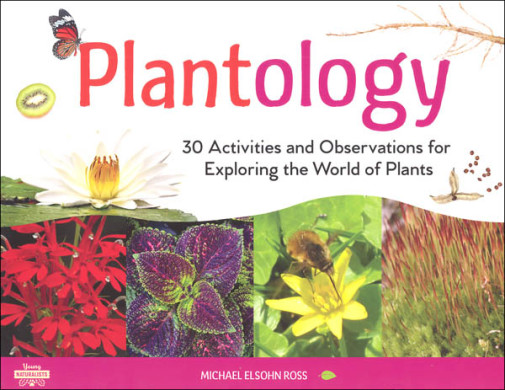We use cookies to make your experience better. To comply with the new e-Privacy directive, we need to ask for your consent to set the cookies. Learn more.
Plantology (30 Activities and Observations for Exploring the World of Plants)
Learning about plants can be so much fun, but who want to just read about them to learn? Plantology gives you a chance to learn about the world of plants through 30 hands-on activities. Learn about the importance of plants in our lives, plant structure, seeds, leaves, flowers, and fruits. Activities include starting a plant journal (to both record your activities from this book as well as plants you discover while being outdoors), looking for algae in bodies of water, starting a seed collection, and becoming a root detective as you examine the roots of weeds. So many practical activities to help you understand the vast and fascinating world of plants. 107 pgs, pb. ~ Donna
DID YOU KNOW...Scientists believe that mosses, the first plants, may have changed the Earth's climate from hot to cold by removing carbon dioxide from the atmosphere? Many members of the cabbage family release a poison "mustard" gas to fend off grazers? Plants are used in thousands of industries, from low-cost sewage treatment to new medical cures? Young nature enthusiasts will learn these and other fascinating facts about plants in this colorful, interactive resource. Plantology contains fun, kid-friendly discussions and activities to explore many topicsfrom seeds, roots, and sprouts to plant skeletons, leaves, petals, and fruits. It then goes beyond the basics to delve into the unknown world of common weeds, fascinating plant defense systems, and the countless roles plants play in our lives. With encouragement to "Try This," "Smell It," and "Look For," kids participate in 30 hands-on activities that promote observation and analysis, writing and drawing, math and science, and nature literacy skills. Children will keep a journal, examine and sketch plant structures, start a seed collection, make tasty vegetarian dishes, and more. Readers from any environment will start to notice the plants around themnot just in parks, gardens, and woods but also surrounding the schools, buildings, and sidewalks of their town, and in their own backyards. Useful resources include a glossary of scientific terms, a list of nature organizations and groups, and a teacher's guide to initiate classroom discussion and investigation.


To supplement my 9th grader's science study.
I was looking for hands on activities to complete with our plant/tree unit this fall.